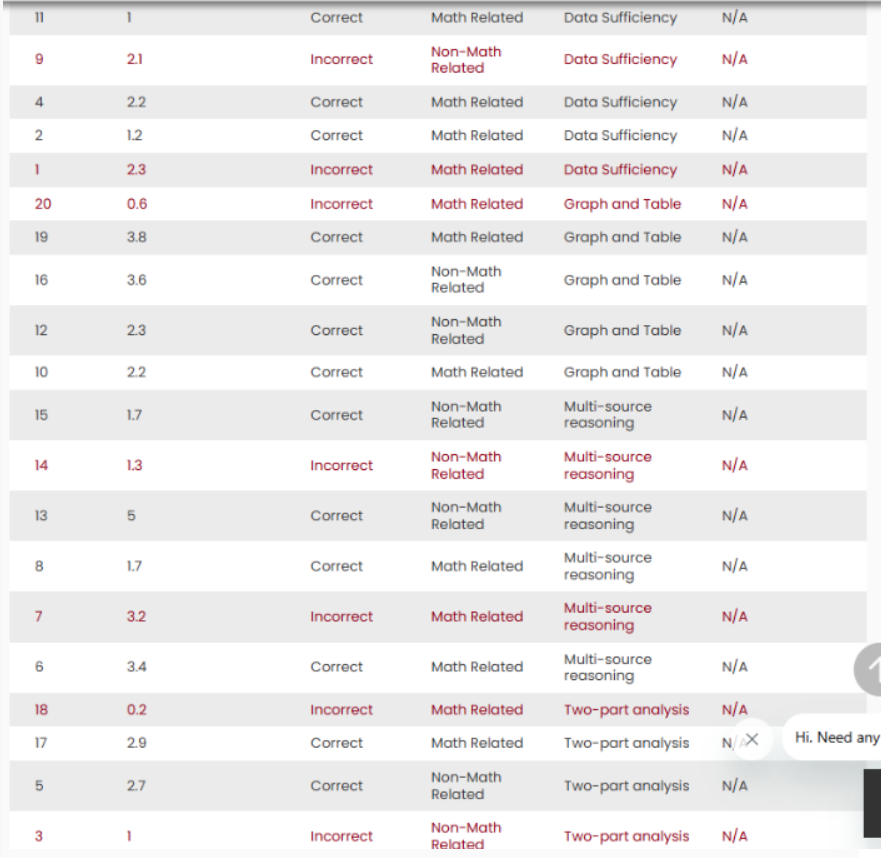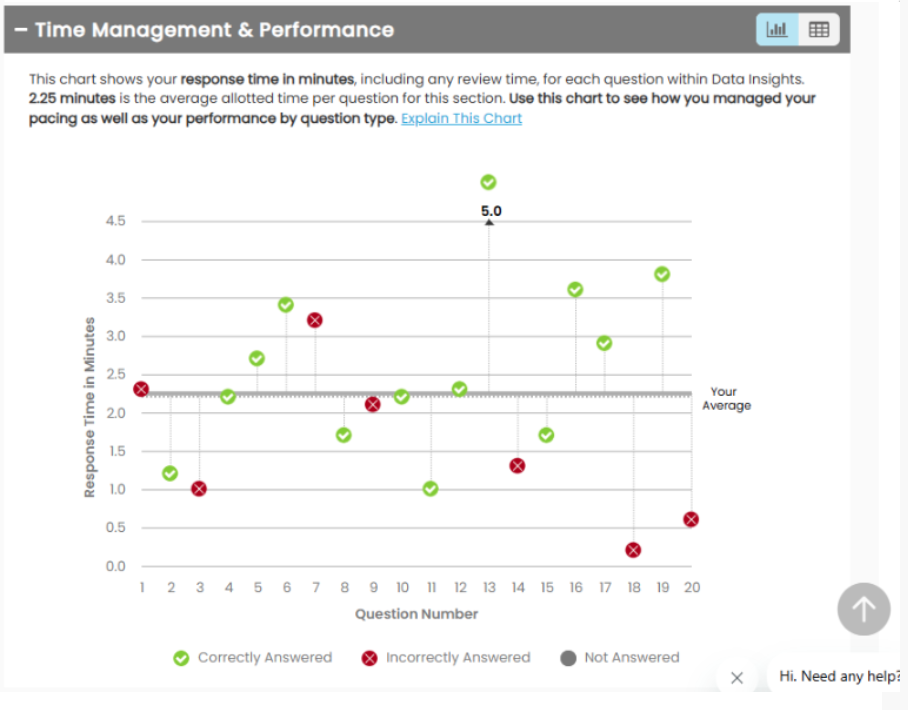Events & Promotions
|
|

GMAT Club Daily Prep
Thank you for using the timer - this advanced tool can estimate your performance and suggest more practice questions. We have subscribed you to Daily Prep Questions via email.
Customized
for You
Track
Your Progress
Practice
Pays
Not interested in getting valuable practice questions and articles delivered to your email? No problem, unsubscribe here.
- Nov 20
07:30 AM PST
-08:30 AM PST
Learn what truly sets the UC Riverside MBA apart and how it helps in your professional growth - Nov 22
11:00 AM IST
-01:00 PM IST
Do RC/MSR passages scare you? e-GMAT is conducting a masterclass to help you learn – Learn effective reading strategies Tackle difficult RC & MSR with confidence Excel in timed test environment - Nov 23
11:00 AM IST
-01:00 PM IST
Attend this free GMAT Algebra Webinar and learn how to master the most challenging Inequalities and Absolute Value problems with ease. - Nov 25
10:00 AM EST
-11:00 AM EST
Prefer video-based learning? The Target Test Prep OnDemand course is a one-of-a-kind video masterclass featuring 400 hours of lecture-style teaching by Scott Woodbury-Stewart, founder of Target Test Prep and one of the most accomplished GMAT instructors.
mbaaccount1234
Joined: 11 Jan 2024
Last visit: 29 Oct 2025
Posts: 70
Given Kudos: 104
Location: Brazil
Schools: Booth '26 CBS '26 HBS '26 Sloan '26 Wharton '26 Kellogg '26
GMAT Focus 1: 655 Q86 V83 DI78 

GPA: 8/10
Schools: Booth '26 CBS '26 HBS '26 Sloan '26 Wharton '26 Kellogg '26
GMAT Focus 1: 655 Q86 V83 DI78 

Posts: 70
Kudos
Bookmarks
Hello everyone!
I would really apreciate with a help regarding where to focus the most in DI to get a better score in my case... My biggest problem is DI (Have been able to handle Q and V). When studying MSR or TPA for example, I don't feel that I've been growing that much, as the questions in general are so different... My point is that I don't feel that making more questions has made me better especially in MSR and TPA... Will leave bellow my DI section, any help on what to target during the next weeks would really help...
Tks a lot!!





GMAT-Club-Forum-xyir4z62.png [ 8.68 KiB | Viewed 1361 times ]

GMAT-Club-Forum-7ovq72hw.png [ 156.31 KiB | Viewed 1366 times ]

GMAT-Club-Forum-uv3ta716.png [ 241 KiB | Viewed 1363 times ]

GMAT-Club-Forum-zxien44y.png [ 168.86 KiB | Viewed 1365 times ]
I would really apreciate with a help regarding where to focus the most in DI to get a better score in my case... My biggest problem is DI (Have been able to handle Q and V). When studying MSR or TPA for example, I don't feel that I've been growing that much, as the questions in general are so different... My point is that I don't feel that making more questions has made me better especially in MSR and TPA... Will leave bellow my DI section, any help on what to target during the next weeks would really help...
Tks a lot!!
Attachment:
GMAT-Club-Forum-xyir4z62.png [ 8.68 KiB | Viewed 1361 times ]
Attachment:
GMAT-Club-Forum-7ovq72hw.png [ 156.31 KiB | Viewed 1366 times ]
Attachment:
GMAT-Club-Forum-uv3ta716.png [ 241 KiB | Viewed 1363 times ]
Attachment:
GMAT-Club-Forum-zxien44y.png [ 168.86 KiB | Viewed 1365 times ]
Kudos
Bookmarks
My approach for both question types was largely similar. It is important to spend adequate time upfront, not rushing through but also not dragging, while collecting all the relevant details. For MSR, when you begin answering the questions, try to return to the tab that contains the relevant information, cross-check it with your mental map, and decide whether you can confidently answer the question. If you are uncertain about multiple sub-questions, it is often better to skip them early on.
Time management is key. For example, if the MSR passage is dense or complex, the associated questions are likely to be easier, so it makes sense to spend an extra minute understanding the passage well. The reverse may also hold true. Pay close attention to the types of mistakes you are making. It is easy to overlook a key word in the tabs while skimming or to misread a question asking whether something can be evaluated, leading you to solve it unnecessarily and waste time.
For TPAs, it helps to use the answer choices early. Once you grasp the core of the argument, working backwards from the options is often effective. If you have read the argument and the options but still feel stuck, make your best guess and move on. The questions here are often rooted in core Quant or Verbal concepts. If you consistently draw a blank, it is a sign that reviewing those fundamentals would be worthwhile. Also, going through expert solutions afterward can help you catch insights you may be missing in the moment.
From your mock results, it seems that cutting down on errors in your stronger areas like DS could significantly boost your overall score. Additionally, it looks like you have been spending too little time on TPAs to get them right. If that is by design, that is fine, but if not, you will need to allocate a bit more time to solve them correctly. Try to build a strategy that lets you confidently solve the questions you know while also securing the easy and medium ones. You do not need to be perfect. Just play to your strengths and make smart decisions.
Time management is key. For example, if the MSR passage is dense or complex, the associated questions are likely to be easier, so it makes sense to spend an extra minute understanding the passage well. The reverse may also hold true. Pay close attention to the types of mistakes you are making. It is easy to overlook a key word in the tabs while skimming or to misread a question asking whether something can be evaluated, leading you to solve it unnecessarily and waste time.
For TPAs, it helps to use the answer choices early. Once you grasp the core of the argument, working backwards from the options is often effective. If you have read the argument and the options but still feel stuck, make your best guess and move on. The questions here are often rooted in core Quant or Verbal concepts. If you consistently draw a blank, it is a sign that reviewing those fundamentals would be worthwhile. Also, going through expert solutions afterward can help you catch insights you may be missing in the moment.
From your mock results, it seems that cutting down on errors in your stronger areas like DS could significantly boost your overall score. Additionally, it looks like you have been spending too little time on TPAs to get them right. If that is by design, that is fine, but if not, you will need to allocate a bit more time to solve them correctly. Try to build a strategy that lets you confidently solve the questions you know while also securing the easy and medium ones. You do not need to be perfect. Just play to your strengths and make smart decisions.
Kudos
Bookmarks
Any resources for GI questions? I see that you have a DI90 and DI has been a struggle for me on mocks, while practicing otherwise I am doing decent. But during mocks GI questions that spins a language make me read it again and again. And generally reading the graph is not the issue for me, it's the language that makes it tougher. And for DS, how to make sure without disproving both the statements that statement are sufficient. Usually I am sometimes great at DS and sometimes I am not, in mock tests I am struggling with these 2 things.
Also for the person asking for advice Tables, MSR and TPA's are easy if you know what to read.
In tables, break the question in parts for each choice sometimes that helps you sort the right thing.
MSR same advice, skim through but more than RC's and less than a news you might read, you should have a sense where is what and if there are any "weird" conditions mentions.
TPA's for non-math related, practice more CR's usually TPA arguments are easier.
TPA can also be logic based so properly structing the info will lead to an answer, just make sure you know the stem of the question i.e., you know what to deduce from the data.
And maths one are usually inter-related so derive equations from the passage above and try to substitute values in the option choices. ( Very rarely the passage will provide the whole picture to get the values without substituting them)
Also for the person asking for advice Tables, MSR and TPA's are easy if you know what to read.
In tables, break the question in parts for each choice sometimes that helps you sort the right thing.
MSR same advice, skim through but more than RC's and less than a news you might read, you should have a sense where is what and if there are any "weird" conditions mentions.
TPA's for non-math related, practice more CR's usually TPA arguments are easier.
TPA can also be logic based so properly structing the info will lead to an answer, just make sure you know the stem of the question i.e., you know what to deduce from the data.
And maths one are usually inter-related so derive equations from the passage above and try to substitute values in the option choices. ( Very rarely the passage will provide the whole picture to get the values without substituting them)
hr1212
















